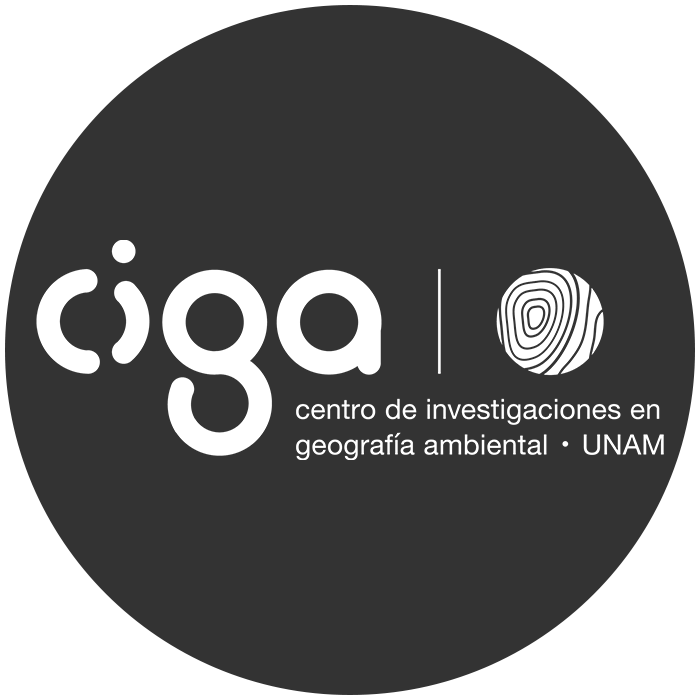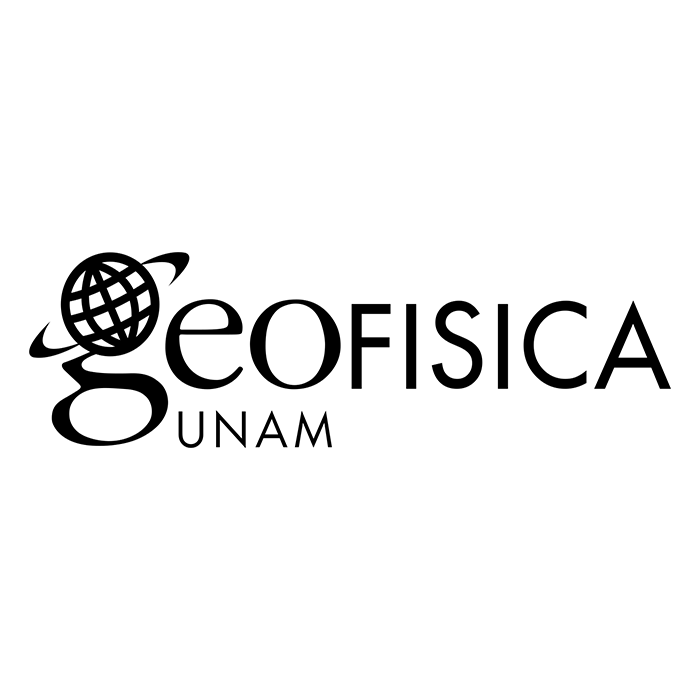First National Report on Soil Salinity Across Paraguay
Main Article Content
Abstract
Assessing soil salinity on a national scale provides crucial information on soil fertility. Our objective was to map soil salinity in Paraguay at the topsoil layer (0-30 cm) using indicators such as Electrical Conductivity (EC), pH, and Exchangeable Sodium Percent (ESP). We employed a model with 80 data points for Electrical Conductivity (EC) and 204 points for pH and Exchangeable Sodium Percent (ESP). The statistical model used to map soil salinity properties was the "quantile random forest." For validation and accuracy calculation, we utilized "cross-validation" with all soil sampling sites and a "Random" selection parameter. To ensure result consistency, we repeated the validation five times, calculating the average of the results. Uncertainty was estimated using "predUncertain-quantile random forest," implemented in the R programming language. In general, Paraguayan soils at a depth of 0 to 30 cm exhibit low salt levels, with the soils in the Paraguayan Chaco region showing higher levels. Two primary factors contribute to soil salinity in Paraguay: natural factors, such as a dry climate, high temperatures, and high evapotranspiration, and secondary factors, including soil parent material with alluvial deposits and groundwater with significant salt content. It’s worth noting that actual salinity values, both in Paraguayan Chaco and the eastern region, might surpass those mentioned in this study due to limited available data and the spatial resolution of the map. This study represents the first effort to develop a soil salinity map of Paraguay, providing the initial national baseline for the development of salinity/sodicity monitoring frameworks. It can be instrumental in addressing regional gaps in salinity/sodicity within South America.
Downloads
Article Details

This work is licensed under a Creative Commons Attribution-NonCommercial-ShareAlike 4.0 International License.
PLUMX Metrics
References
Abdennour, M. A., Douaoui, A., Piccini, C., Pulido, M., Bennacer, A., Bradaï, A., Barrena, J., Yahiaoui, I., 2020. Predictive mapping of soil electrical conductivity as a Proxy of soil salinity in south-east of Algeria. Environmental and Sustainability Indicators 8, 1–13, https://doi.org/10.1016/j.indic.2020.100087.
Alvarenga, D., Barboza, F., Bender, H., Carlini, A., Degen, R., Fracchia, F., Geyh, M., Hoffman, R., Kruck, W., Medina Netto, A., Mereles, F., Mollat, H., Nitsch, M., de Pablos, Th., Portillo, L., Raidan, G., Rojas, C., Wiens, F., 1998. Proyecto Sistema Ambiental del Chaco. Ministerio de Agricultura y Ganadería (MAG), Dirección de ordenamiento Territorial (DOA) and Bundesanstalf fur Geowissenschaften und Roshstoffe (BGR), Hannover, Bundesrepublik Deutshland.
Bas Niñerola, V., Navarro-Pedreño, J., Gómez Lucas, I., Meléndez Pastor, I., Jordán Vidal, M. M., 2017. Geostatistical assessment of soil salinity and cropping systems used as soil phytoremediation strategy. Journal of Geochemical Exploration 174, 53–58, https://doi.org/10.1016/j.gexplo.2016.06.008.
Batlle-Sales, J., 2011. Salinization: an environmental concern under climate change scenarios. Proceedings of the Global Forum on Salinization and Climate Change (GFSCC2010).
Bender, H., Boker, F., Wiens, F., Mebus, G., Mitlohner, R., Nitsch, M., Shaffer, U., Wagnes, R., Wiens, F., 1998. Proyecto Inventario Ambiental del Chaco. Inventario, Evaluaciones y Recomendaciones para la Protección de los espacios naturales en la región occidental del Paraguay. Asunción- Paraguay.
Bless, A. E., Colin, F., Crabit, A., Devaux, N., Philippon, O., Follain, S., 2018. Landscape evolution and agricultural land salinization in coastal area: A conceptual model. Science of The Total Environment 625, 647–656, https://doi.org/10.1016/j.scitotenv.2017.12.083.
Brito, C. F. B., Santos, M. R. d., Fonseca, V. A., Arantes, A. d. M., Almeida, J. R. d., 2017. Physiological characteristics and yield of ‘Pérola’ pineapple in the semi-arid region1. Revista Brasileira de Engenharia Agrícola e Ambiental 21, 834–839, https://doi.org/10.1590/1807-1929/agriambi.v21n12p834-839.
Bui, E. N., 2013. Soil salinity: A neglected factor in plant ecology and biogeography. Journal of Arid Environments 92, 14–25, https://doi.org/10.1016/j.jaridenv.2012.12.014.
da Silva Dias, N., da Silva, J. F., Moreno-Pizani, M. A., Lima, M. C. F., da Silva Ferreira, J. F., Linhares, E. L. R., de Sousa Neto, O. N., Portela, J. C., da Silva, M. R. F., Ferreira Neto, M., dos Santos Fernandes, C., 2021. Environmental, Agricultural, and Socioeconomic Impacts of Salinization to Family-Based Irrigated Agriculture in the Brazilian Semiarid Region. En: Taleisnik, E., Lavado, R. S. (Eds.), Saline and Alkaline Soils in Latin America: Natural Resources, Management and Productive Alternatives. Springer International Publishing, Cham, pp. 37–48, https://doi.org/10.1007/978-3-030-52592-7_2.
Efron, B., 1992. Jackknife-After-Bootstrap Standard Errors and Influence Functions. Journal of the Royal Statistical Society: Series B (Methodological) 54 (1), 83–111, https://doi.org/10.1111/j.2517-6161.1992.tb01866.x.
FAO, 2020. Mapping of salt-affected soils: Technical specifications and country guidelines. Roma, 24p.
Ferreira, J. F. S., Liu, X., Suarez, D. L., 2019. Fruit yield and survival of five commercial strawberry cultivars under field cultivation and salinity stress. Scientia Horticulturae 243, 401–410, https://doi.org/10.1016/j.scienta.2018.07.016.
Gebremeskel, G., Gebremicael, T. G., Kifle, M., Meresa, E., Gebremedhin, T., Girmay, A., 2018. Salinization pattern and its spatial distribution in the irrigated agriculture of Northern Ethiopia: An integrated approach of quantitative and spatial analysis. Agricultural Water Management 206, 147–157,
https://doi.org/10.1016/j.agwat.2018.05.007.
Glatzle, A., Reimer, L., Núñez-Cobo, J., Smeenk, A., Musálem, K., Laino, R., 2020. Groundwater dynamics, land cover and salinization in the dry Chaco in Paraguay. Ecohydrology & Hydrobiology 20 (2), 175–182, https://doi.org/10.1016/j.ecohyd.2019.10.003.
Grassi, B., 2020. Estudio del Clima Paraguay 2019. MADES-STP. Asunción, Paraguay.
Jobbágy, E. G., Giménez, R., Marchesini, V., Diaz, Y., Jayawickreme, D. H., Nosetto, M. D., 2021. Salt Accumulation and Redistribution in the Dry Plains of Southern South America: Lessons from Land Use Changes. En: Taleisnik, E., Lavado, R. S. (Eds.), Saline and Alkaline Soils in Latin America: Natural
Resources, Management and Productive Alternatives. Springer International Publishing, Cham, pp. 51–70, https://doi.org/10.1007/978-3-030-52592-7_3.
Jobbágy, E. G., Tóth, T., Nosetto, M. D., Earman, S., 2017. On the fundamental causes of high environmental alkalinity (ph >= 9): An assessment of its drivers and global distribution. https://doi.org/10.1002/ldr.2718.
Lamontagne, S., Leaney, F. W., Herczeg, A. L., 2005. Groundwater–surface water interactions in a large semi-arid floodplain: implications for salinity management. Hydrological Processes 19 (16), 3063–3080, https://doi.org/10.1002/hyp.5832.
López Gorostiaga, O., González Érico, E., De Llamas, P., Molinas, A., Franco, E., García, S., Ríos, E., 1993. Estudio de Reconocimiento de suelos y la capacidad de uso de la tierra de la región oriental del Paraguay. Informe Preliminar. Asunción, Paraguay. Ministerio de Agricultura y Ganadería. Subsecretaria de estados de recursos naturales y medio ambiente. Banco Mundial.
Machado, R. M. A., Serralheiro, R. P., 2017. Soil Salinity: Effect on Vegetable Crop Growth. Management Practices to Prevent and Mitigate Soil Salinization. Horticulturae 3 (2), 30, https://doi.org/10.3390/horticulturae3020030.
Marchesini, V. A., Giménez, R., Nosetto, M. D., Jobbágy, E. G., 2017. Ecohydrological transformation in the Dry Chaco and the risk of dryland salinity: Following Australia’s footsteps? Ecohydrology 10 (4), e1822, https://doi.org/10.1002/eco.1822.
Medeiros, J. F. D., Neto, C. P. C. T., Dias, N. D. S., Gheyi, H. R., Silva, M. V. T. D., Loiola, A. T., 2017. Salinidade e ph de um argissolo irrigado com água salina sob estratégias de manejo. Revista Brasileira de Agricultura Irrigada 11 (3), 1407–1419, https://doi.org/10.7127/rbai.v11n300560.
Omuto, C. T., Vargas, R. R., El Mobarak, A.M., Mohamed, N., Viatkin, K., Yigini, Y., 2020. Mapping of salt-affected soils:Technical manual. Rome, FAO.
Pla Sentís, I., 2014a. Advances in the prognosis of soil sodicity under dryland irrigated conditions. International Soil and Water Conservation Research 2 (4), 50–63, https://doi.org/10.1016/S2095-6339(15)30058-7.
Pla Sentís, I., 2014b. Nuevas experiencias en la evaluación y diagnóstico de procesos de salinización y sodificación de suelos en América Latina. Suelos Ecuatoriales 44 (2), 125–137.
Pla Sentís, I., 2021. Overview of Salt-Affected Areas in Latin America: Physical, Social and Economic Perspectives. En: Taleisnik, E., Lavado, R. S. (Eds.), Saline and Alkaline Soils in Latin America: Natural Resources, Management and Productive Alternatives. Springer International Publishing, Cham, pp. 3–36, https://doi.org/10.1007/978-3-030-52592-7_1.
Pla Sentís, Ildefonso, 1983. Sistema integrado agua-cultivo-suelo-manejo para evaluar la calidad de agua de riego. In: Isotopes and radiation techniques en soil physics and irrigation studies. IAEA. Viena, pp 191–206.
Rejalaga Cubas, B., 2002. El agua en Iberoamérica; de la escasez a la desertificación. Edit. Alicia Fernández Cirelli y Elena Abraham. Publ. por CYTED XVII, CETA y Fac. Cs. Veterinarias UBA. 137-146. Instituto Nacional de Tecnología y Normalización. Departamento de Medio Ambiente, Asunción, Paraguay.
Taleisnik, E., Lavado, R. S. (Eds.), 2021. Saline and Alkaline Soils in Latin America: Natural Resources, Management and Productive Alternatives. Springer International Publishing, Cham, https://doi.org/10.1007/978-3-030-52592-7.
Torres Duggan, M., Álvarez, C. R., Rimski Korsakov, H., 2017. Relevamiento de la calidad de agua y sodicidad edáfica de suelos regados en forma complementaria en norte de Buenos Aires y sur de Santa Fe. En: Taleisnik, E., Lavado, R. S. (Eds.), Ambientes salinos y alcalinos de la Argentina: recursos y aprovechamiento productivo. Universidad Católica de Córdoba - Orientación Gráfica Editora, pp. 208–210.
Tozzi, F., Mariani, A., Vallone, R., Morábito, J., 2017. Evolución de la salinidad de los suelos regadíos del río Tunuyán Inferior (Mendoza - Argentina). Revista de la Facultad de Ciencias Agrarias 49 (1), 79–93.
Van Bavel, C. H. M., 1970. Isotope and Radiation Techniques in Soil Physics and Irrigation Studies:. Soil Science 109 (6), 399, https://doi.org/10.1097/00010694-197006000-00010.
Viglizzo, E. F., Ricard, M. F., 2021. Climate Change and Salinity-Vulnerable Ecosystems in Latin America. En: Taleisnik, E., Lavado, R. S. (Eds.), Saline and Alkaline Soils in Latin America: Natural Resources, Management and Productive Alternatives. Springer International Publishing, Cham, pp. 449–456, https://doi.org/10.1007/978-3-030-52592-7_23.
Várallyay, G., 2010. The impact of climate change on soils and on their water management 8 (Special Issue II), 385–396.
Wang, D., Zhao, C., Zheng, J., Zhu, J., Gui, Z., Yu, Z., 2021. Evolution of soil salinity and the critical ratio of drainage to irrigation (CRDI) in the Weigan Oasis in the Tarim Basin. CATENA 201, 105210, https://doi.org/10.1016/j.catena.2021.105210.
Yao, Y., Lund, J. R., Harter, T., 2022. Conjunctive Water Management for Agriculture With Groundwater Salinity. Water Resources Research 58 (10), e2021WR031058, https://doi.org/10.1029/2021WR031058.
Zhu, C., Ding, J., Zhang, Z., 2022. Revealing the scale- and location-specific variation and control factors of soil salinity using bi-dimensional empirical modal decomposition. Land Degradation & Development 33 (17), 3446–3460, https://doi.org/10.1002/ldr.4398.
Zhuang, Q., Shao, Z., Huang, X., Zhang, Y., Wu, W., Feng, X., Lv, X., Ding, Q., Cai, B., Altan, O., 2021. Evolution of soil salinization under the background of landscape patterns in the irrigated northern slopes of Tianshan Mountains, Xinjiang, China. CATENA 206, 105561, https://doi.org/10.1016/j.catena.2021.105561.






